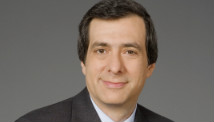St. Louis-based construction firm Clayco Inc. is moving its headquarters to Chicago, attracted by ease of air travel, proximity to clients, access to young professionals and the potential to land city business as Mayor Rahm Emanuel pushes ahead with public-private partnerships for infrastructure improvements, its top executive said Thursday.
Clayco Chairman and CEO Robert Clark and Emanuel are expected to formally announce the move Friday.
Two-hundred and eighty of the company's 1,000 employees already work in the Chicago area, including 88 who work full time at the Jewelers Building, 35 E. Wacker Drive, which becomes company headquarters.
The company expects to double its Chicago workforce during the next couple of years, in part by increasing its architectural business and expanding its infrastructure business.
Clark said the company is seeking to acquire a municipal engineering company as part of an effort to develop its infrastructure business during the next few years. Now focused on industrial, office and institutional projects, the company would like to add a fourth specialty area that would go after water, sewer, road, bridge and airport work, Clark said.
"In the long run, public-private partnerships are something I'm very intrigued about and interested in pursuing," he said. "I don't think we'll do it overnight. … It may be three years from now, until we have significant traction in the (infrastructure) market."
"We're interested in national projects, not just local," he said. "But hopefully we'll have work in our own backyard."
Clayco donated $50,000 to Emanuel's mayoral campaign in late 2010, and Clark donated an additional $10,000 in September to The Chicago Committee, the mayor's campaign fund, according to the Illinois State Board of Elections. Clark said his contributions to a variety of politicians stem from personal convictions and have no relation to his business endeavors.
Tom Alexander, a spokesman for Emanuel, said: "Clayco is choosing Chicago because Chicago offers them unique access to world-class talent and a location from which they can easily and effectively do business around the world, period. Any type of private-public building project would undergo the city's very strict, competitive procurement process."
Last spring, Emanuel won City Council approval for the formation of the Chicago Infrastructure Trust, which will endeavor to secure private financing for public infrastructure projects.
Clayco's shift into downtown Chicago began in October 2010, when it opened offices in the Jewelers Building. Employees who had been based in Oakbrook Terrace have moved there, as have a handful of executives from St. Louis. Clark relocated to Chicago in September 2010.
The company did not seek or receive any financial incentives for its move, the city said. Clayco will keep its St. Louis office intact, and no layoffs are planned as part of the relocation.
Clark and Emanuel first met when Emanuel worked in the Clinton White House. Clark, who was active with the Young Presidents' Organization, worked with Emanuel on some events at the White House. Their paths have crossed a number of times since then, including during President Barack Obama's campaign in 2008.
A meeting with Emanuel played a role in the decision to relocate company headquarters, Clark said. It occupies the 13th and 27th floors of the Jewelers Building, or 30,000 square feet.
"He asked me to target our national clients and bring them here," Clark recalls. "Quite frankly, I was blown away by that. Most mayors are not that aggressive; they leave that up to their economic development folks."
Clayco has done work for a number of large institutions and corporations, including Dow Chemical, Amazon.com, Caterpillar, and locally, Kraft Foods, Anixter, the University of Illinois, the University of Chicago and Blue Cross Blue Shield.
Started 28 years ago by Clark, the privately held company has annual revenue of $820 million. Subsidiaries include architecture and design firm Forum Studios and Concrete Strategies Inc.
kbergen@tribune.com
Twitter @kathy_bergen

